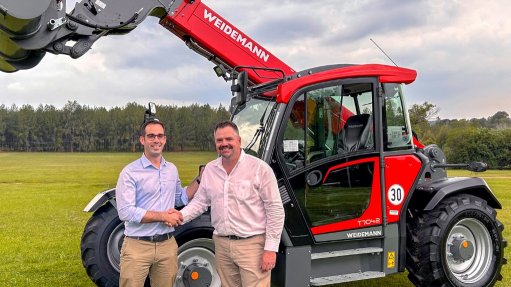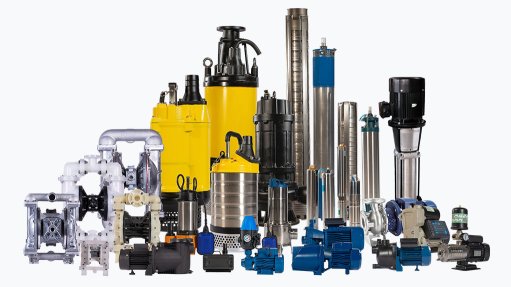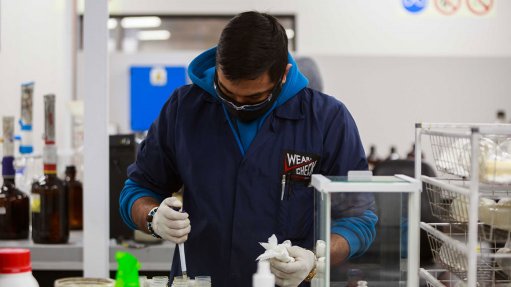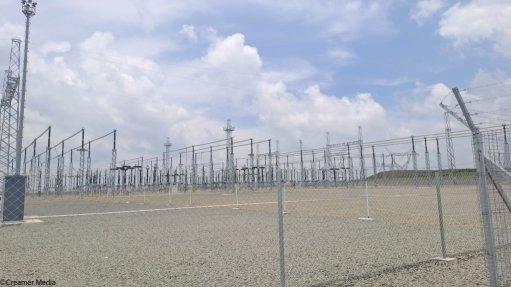South Africa’s SMME sector could accelerate job creation with greater support
The small, medium-sized and microenterprises (SMMEs) of South Africa contribute about 35%, or R2.5-trillion, of the country's yearly GDP, account for 50% of all formal employment and create 60% of the new jobs each year.
However, in many economies, SMMEs account for up to 70% of GDP and SMMEs typically account for 40% to 50% of emerging economies' yearly GDP.
“There is room for SMMEs to contribute more to the economy,” said specialist SMME financial services provider Business Partners MD Jeremy Lang during nonprofit organisation the Small Business Institute's (SBI's) SME Indaba, held in Johannesburg, on August 26.
Beyond contributing to formal jobs, SMMEs were significant wealth creators, served their communities and contributed to taxes for the country. They were also innovators that solved problems, such as providing accommodation for tertiary students, he illustrated.
However, despite typically being eternal optimists, small business owners in recent surveys have flagged their concerns about the tough economic conditions and the uncertainty caused by geopolitical tensions, contributing to delays in investments.
Small business owners also highlighted a lack of government support, dampened levels of confidence and expectations for lower growth, he added.
Meanwhile, many SMMEs closed their doors owing to the impact of successive crises in South Africa, with rotational power cuts, or loadshedding, first affecting those businesses that could not afford alternatives, said University of the Witwatersrand senior lecturer Dr Lumkile Mondi, who also served on the SBI board.
If the businesses could put in place generators, some were then faced with a lack of water and some were unable to secure municipal services, and went under. Other small businesses closed owing to the impact of the Covid-19 pandemic, he said.
“We have not yet recovered the thousands of businesses that closed owing to these crises, and, in terms of jobs in the country, these crises did not help,” he highlighted.
While electricity supply in South Africa had stabilised, many of the other crises still presented challenges to small businesses, he added.
“We need more support from politicians to make it easier for small businesses to trade and must put in place policies designed to support small businesses. We need policies that take into account the realities of SMMEs and make regulations transparent and easy to comply with.”
The small business sector also needed municipalities to enforce by-laws and provide services. It was difficult for small businesses to access services such as permitting in cases where municipalities were dysfunctional, and this was very disruptive to small businesses, he added.
Despite the challenges SMMEs face, the sector can grow dramatically, if given a conducive environment. National growth above 3% is typically sufficient to trigger growth in a country's SMME sector.
SMMEs were the backbone of many industries, informal and formal, and could double their contribution to the economy in an environment where interest rates and inflation were low, logistics services were available and stable, and the areas in which they traded were policed, noted Mondi.
“This is a call to action. We can move from a roughly 30% contribution to GDP to 70% in a short space of time, but this requires government support, infrastructure, ease of doing business, as well as low interest and inflation rates, which would enable SMMEs to borrow more affordably and create more job opportunities in the future,” he said.
Meanwhile, SBI CEO John Dludlu pointed out that the country's National Development Plan aspired to 90% of new jobs being created by SMMEs by 2030, but South Africa was nowhere near this figure.
The SMME sector thrived in a growth context and benefited from economic growth. However, growth remained a challenge for the economy, although the renewed focus on energy supply, combating crime and corruption, improving logistics and transportation boosted confidence, said Lang.
“Sustainable businesses create sustainable jobs; therefore, if we create an environment in which SMMEs can flourish, sustainable jobs will follow,” he emphasised.
Looking ahead, South Africa could solve many of the challenges it faced. To create such a conducive environment required more tailored legal and labour frameworks for SMMEs to make it easy for them to do business and not get bogged down with compliance, he said.
“We also need good infrastructure, and we must continue spending in terms of the infrastructure development plan, to improve the operating environment for SMMEs, as well as create opportunities for SMMEs to provide services and goods,” Lang said.
Further, South Africa's SMME sector needs financing that is inclusive, agile and tailored to each SMME's reality.
In line with this, blended funds could create a greater impact together, than the funds could separately, he noted.
An ecosystem in which venture capital funds, development finance institutions, startup and grant funds, catalytic investors and philanthropic funds work together to provide financing to SMMEs would provide commercial returns for investors, improving funding access for SMMEs.
Additionally, because such blended funds provide a blend of capital that seeks commercial and non-commercial returns, the costs are much lower for SMMEs.
“We have concluded a few [blended financing deals] like this, but we need to do so at a much larger scale,” he recommended.
South Africa's SMME sector needed financial products that were flexible, accessible and designed for the applicable stage in the SMME's journey, from startup to scale-up, and which embraced alternative and data sources and methods of assessing SMME's credit-worthiness and monitoring their performance, added Lang.
Funding SMMEs required a different approach. SMMEs required capital, but also capacity, mentorship, market access, digital tools and policy advocacy, he said.
In line with this, SMME funders can view their debt investments more like equity investments, such as by walking the journey with the SMMEs, and using other methods of data collection and measuring credit risk.
Many funders were often heavy-handed and quick to react to signs of distress in SMMEs. They should rather seek to understand the cause and work with the business. As long as these businesses worked diligently to address the challenges, this was a better way of managing credit risk and SMMEs facing financial stress, said Lang.
Article Enquiry
Email Article
Save Article
Feedback
To advertise email advertising@creamermedia.co.za or click here
Comments
Press Office
Announcements
What's On
Subscribe to improve your user experience...
Option 1 (equivalent of R125 a month):
Receive a weekly copy of Creamer Media's Engineering News & Mining Weekly magazine
(print copy for those in South Africa and e-magazine for those outside of South Africa)
Receive daily email newsletters
Access to full search results
Access archive of magazine back copies
Access to Projects in Progress
Access to ONE Research Report of your choice in PDF format
Option 2 (equivalent of R375 a month):
All benefits from Option 1
PLUS
Access to Creamer Media's Research Channel Africa for ALL Research Reports, in PDF format, on various industrial and mining sectors
including Electricity; Water; Energy Transition; Hydrogen; Roads, Rail and Ports; Coal; Gold; Platinum; Battery Metals; etc.
Already a subscriber?
Forgotten your password?
Receive weekly copy of Creamer Media's Engineering News & Mining Weekly magazine (print copy for those in South Africa and e-magazine for those outside of South Africa)
➕
Recieve daily email newsletters
➕
Access to full search results
➕
Access archive of magazine back copies
➕
Access to Projects in Progress
➕
Access to ONE Research Report of your choice in PDF format
RESEARCH CHANNEL AFRICA
R4500 (equivalent of R375 a month)
SUBSCRIBEAll benefits from Option 1
➕
Access to Creamer Media's Research Channel Africa for ALL Research Reports on various industrial and mining sectors, in PDF format, including on:
Electricity
➕
Water
➕
Energy Transition
➕
Hydrogen
➕
Roads, Rail and Ports
➕
Coal
➕
Gold
➕
Platinum
➕
Battery Metals
➕
etc.
Receive all benefits from Option 1 or Option 2 delivered to numerous people at your company
➕
Multiple User names and Passwords for simultaneous log-ins
➕
Intranet integration access to all in your organisation





















